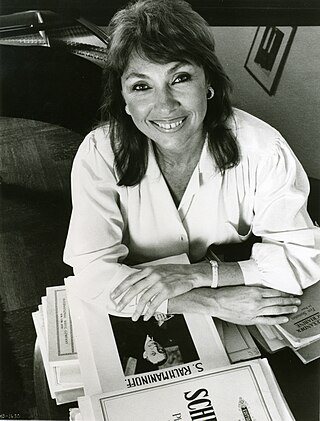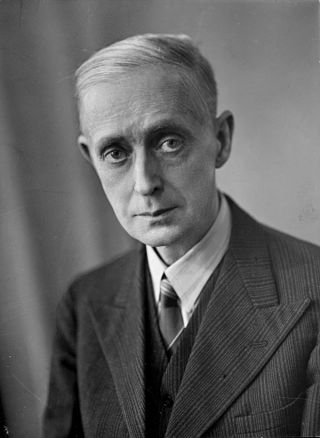
Alexander Nikolayevich Scriabin was a Russian composer and virtuoso pianist. Before 1903, Scriabin was greatly influenced by the music of Frédéric Chopin and composed in a relatively tonal, late Romantic idiom. Later, and independently of his influential contemporary, Arnold Schoenberg, Scriabin developed a much more dissonant musical language that had transcended usual tonality but was not atonal, which accorded with his personal brand of metaphysics. Scriabin found significant appeal in the concept of Gesamtkunstwerk as well as synesthesia, and associated colours with the various harmonic tones of his scale, while his colour-coded circle of fifths was also inspired by theosophy. He is often considered the main Russian Symbolist composer and a major representative of the Russian Silver Age.

Mikhail Vasilievich Pletnev is a Russian pianist, conductor and composer.

The Piano Sonata No. 5, Op. 53, is a work written by Alexander Scriabin in 1907. This was his first sonata to be written in one movement, a format he retained from then on. A typical performance lasts from 11 to 12 minutes. The work is considered to be one of Scriabin's most difficult compositions, both technically and musically.
The Piano Sonata No. 10, Op. 70, was written by Alexander Scriabin in 1913. It was his final work in this form. The piece is highly chromatic and tonally ambiguous like Scriabin's other late works, although arguably less dissonant than most of his late works. It is characterized by frequent trills and tremolos. It is sometimes called his "Insect Sonata", referring to his words:

Grigory Lipmanovich Sokolov is a Russian pianist naturalized Spanish. He is among the most esteemed of living pianists, his repertoire spanning composers from the Baroque period such as Bach, Couperin or Rameau up to Schoenberg and Arapov. He regularly tours Europe and resides in Italy.
G major is a major scale based on G, with the pitches G, A, B, C, D, E, and F♯. Its key signature has one sharp. Its relative minor is E minor and its parallel minor is G minor.

Ruth Laredo was an American classical pianist.
F-sharp minor is a minor scale based on F♯, consisting of the pitches F♯, G♯, A, B, C♯, D, and E. Its key signature has three sharps. Its relative major is A major and its parallel major is F-sharp major.
F minor is a minor scale based on F, consisting of the pitches F, G, A♭, B♭, C, D♭, and E♭. Its key signature consists of four flats. Its relative major is A-flat major and its parallel major is F major. Its enharmonic equivalent, E-sharp minor, has eight sharps, including the double sharp F, which makes it impractical to use.
The Piano Sonata No. 3 in F-sharp minor, Op. 23, by Alexander Scriabin was composed between 1897 and 1898. The sonata consists of four movements, typically spanning 18 minutes in performance.
The Juno Award for Classical Album of the Year has been awarded since 1977, as recognition each year for the best classical music album in Canada.
Samuil Yevgenyevich Feinberg was a Russian and Soviet composer and pianist.

Olav Fartein Valen was a Norwegian composer, notable for his work in atonal polyphonic music. He developed a polyphony similar to Bach's counterpoint, but based on motivic working and dissonance rather than harmonic progression.
Alexander Scriabin's Prelude Opus 51 No. 2 is the second of his Quatre Morceaux op. 51, published in 1906. It is notated in A minor. It is written in a 6/8 beat in 30 measures and should be expressed Lugubre (dire).
The Piano Sonata No. 6, Op. 62, by Alexander Scriabin was composed in 1911. Although it was named the sixth sonata, the piece was preceded by the Sonata No. 7. As it is one of the late piano sonatas of Scriabin's career, the music consists of a single movement and is almost atonal, although it is sometimes listed as being in the key of G. Scriabin reportedly never played the sonata in public, because he feared its darkness.
Sergio Fiorentino was a 20th-century Italian classical pianist whose sporadic performing career spanned five decades. There is quite a bit of footage of his playing that survives, in addition to audio recordings. Recently, a complete concert recorded on video in 1994 has surfaced.
The late piano sonatas of Ludwig van Beethoven usually refer to the last five piano sonatas the composer composed during his late period.
The following is a chronological list of the original studio recordings made by the Canadian pianist Glenn Gould in the years 1956–1982.
Alexander Scriabin's 24 Preludes, Op. 11 is a set of preludes composed in the course of eight years between 1888–96, being also one of Scriabin's first published works with M.P. Belaieff in 1897, in Leipzig, Germany, together with his 12 Études, Op. 8 (1894–95).
Dina Parakhina is a Russian pianist and teacher.




